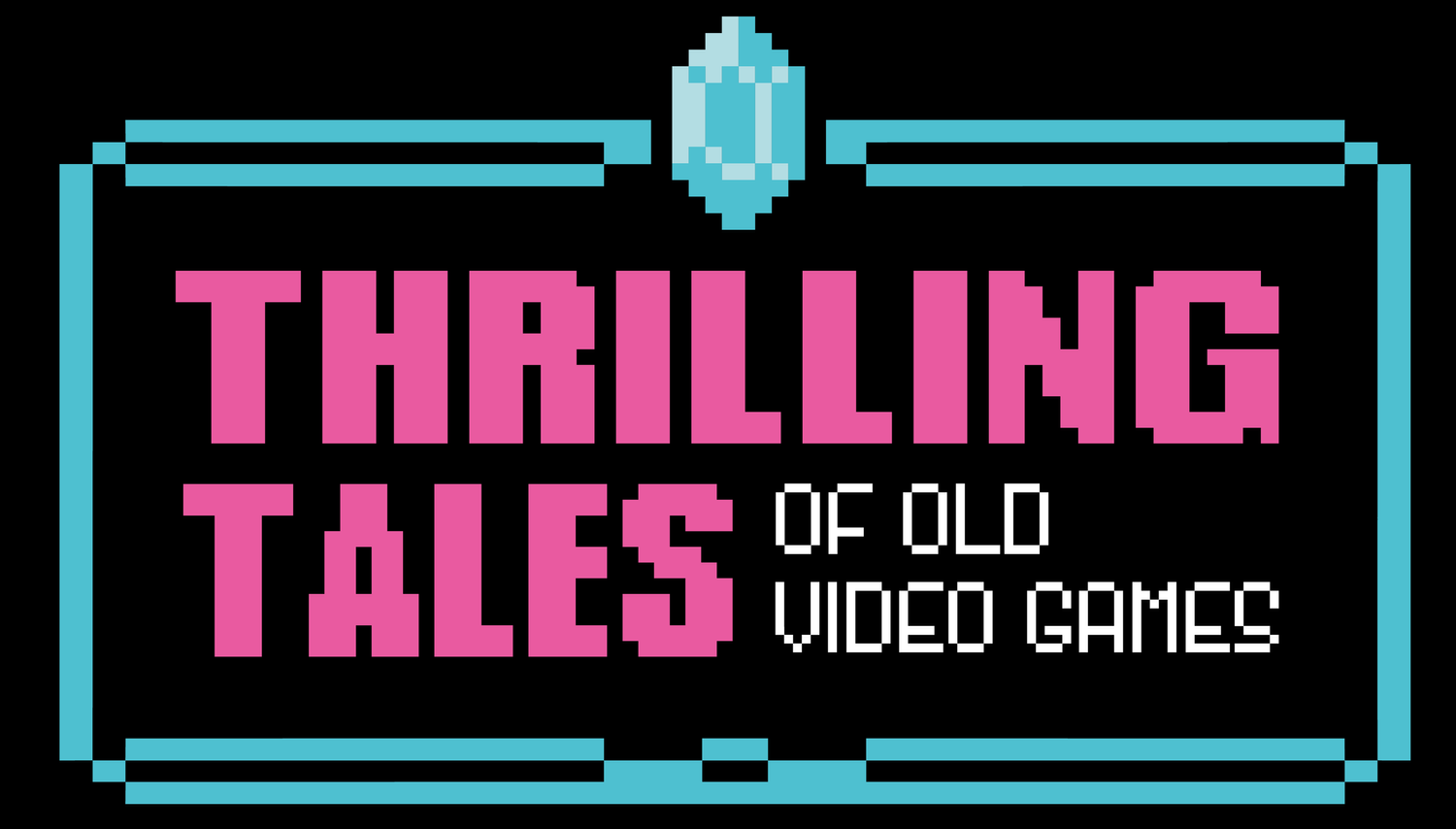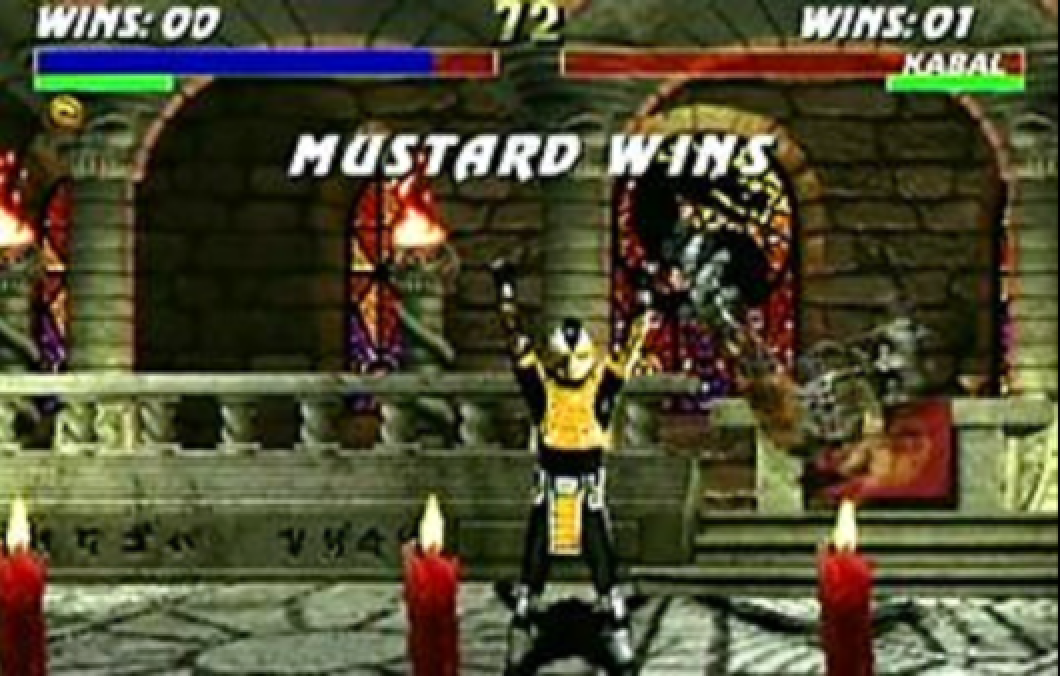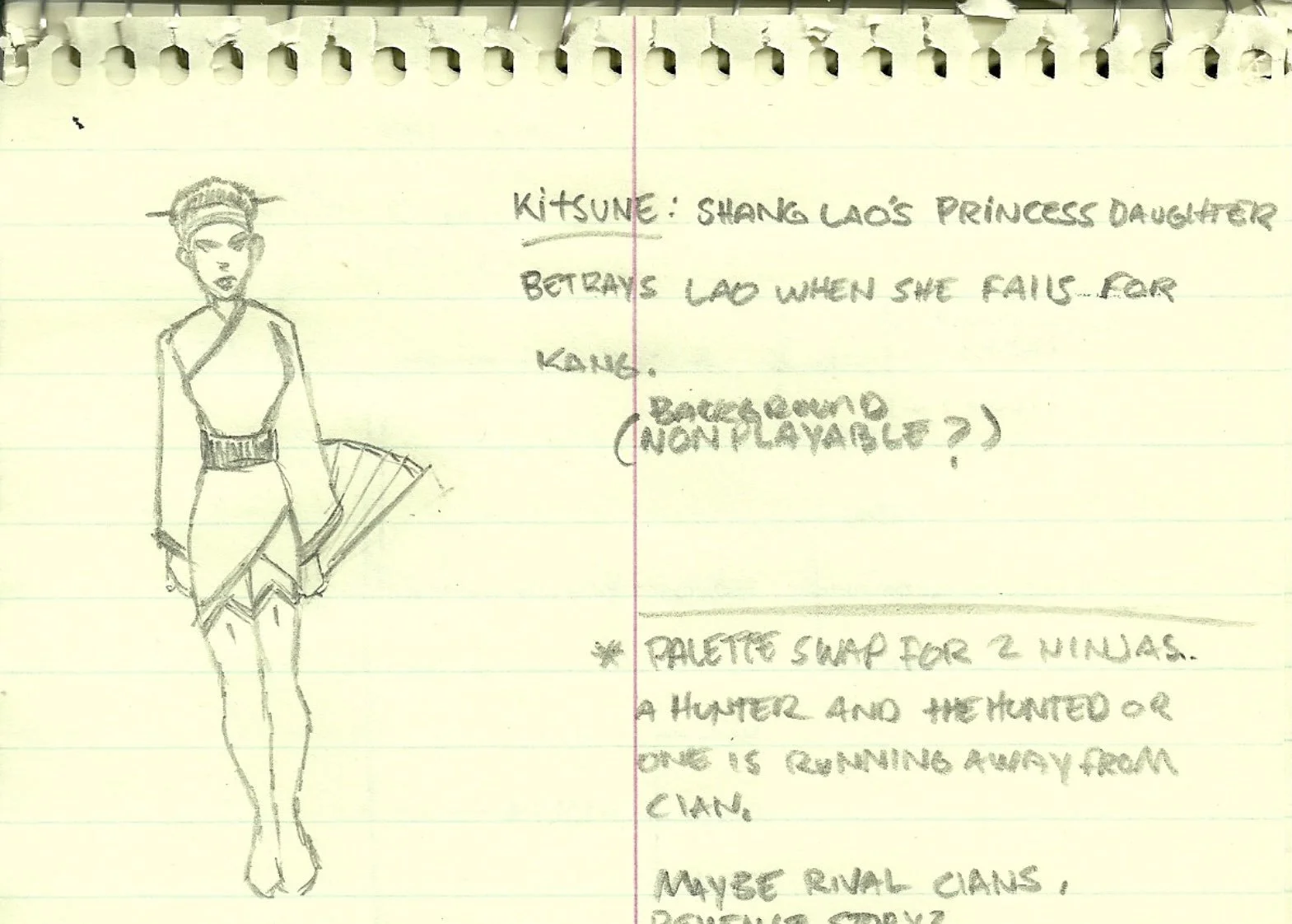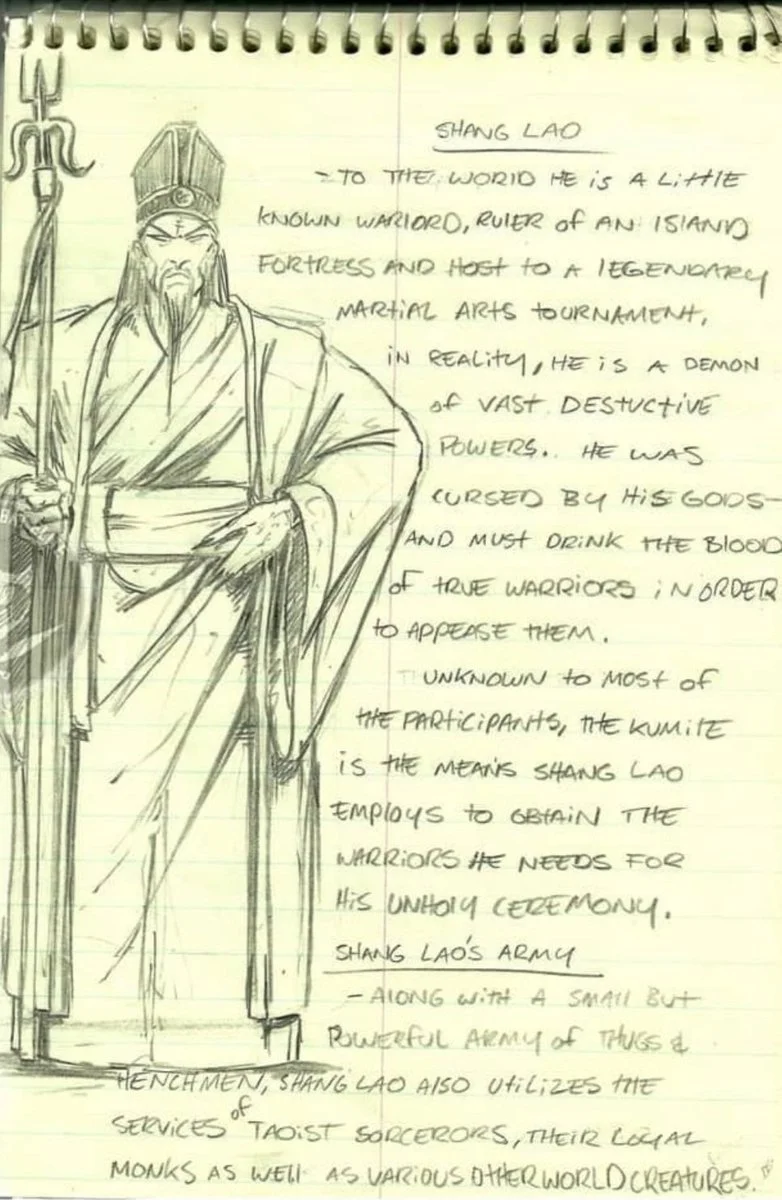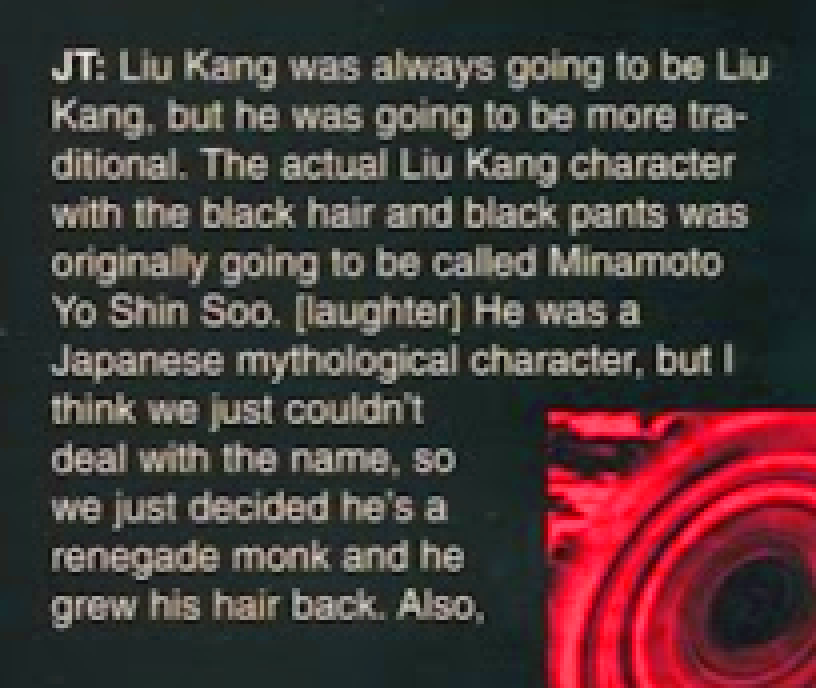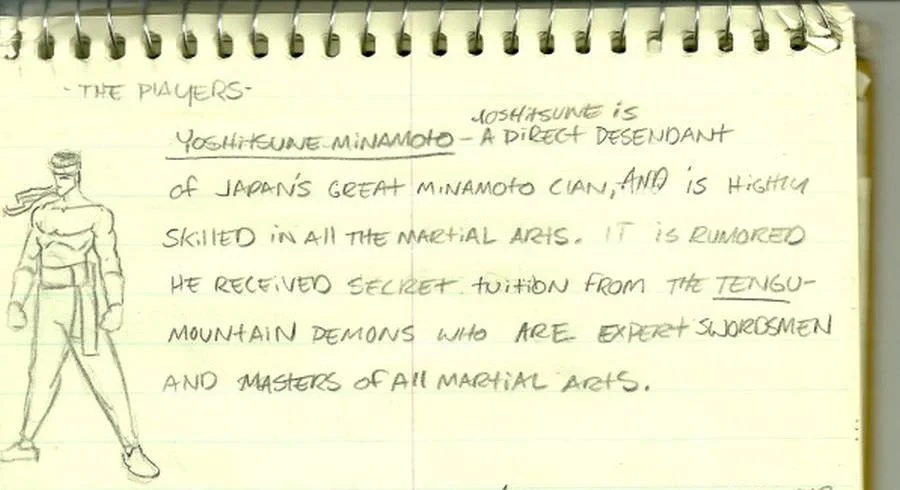The Action Movie Obviousness of Mortal Kombat Character Names
If you only know me from this blog, it might surprise you to learn that I like the HBO series The Gilded Age, despite the fact that it’s decidedly un-video game-like. It’s essentially an American counterpart to Downton Abbey and by the same creator, taking place in 1880s New York. And while it’s less something that I watch for plot than I do for vibes and hats, one character on the show seemed like a bad fit for reasons I couldn’t put my finger on until recently.
I speak of Luke Forte, who joined the show in the second season. For whatever reason, his name seemed off to me, even though there’s nothing period-inappropriate about it. Luke, as a name, is so old that it’s in the Bible, and the character is Italian-American, so that last name actually does make sense. But rolling it over in my head for a while, I finally realized why it stands out to me: It reminds me of Mortal Kombat, the game series that gives us characters with names like Johnny Cage, Sonya Blade, Jax Briggs and Kurtis Stryker. All of them, Luke Forte included, sound like names you’d hear in a B-grade action movie from the 1980s. And for the Mortal Kombat ones, at least, I’d wager that’s very much intentional.
I’ve done nearly a hundred posts on this site, and many of them look into the origins of character names, but all of them so far have been characters that originated in Japan. Even if the Japanese people who create and name these characters have some knowledge of western conventions, they’re usually picking a name considering Japanese audiences first and foremost, and it’s for this reason that we get some real humdingers by English-speaking standards. Even with some of the more outlandish ones — Caffeine Nicotine from Samurai Shodown, I’m looking at you — I have a tendency to accept them at face value, presuming that there’s a cultural context that I am just missing.
I am not so kind to the ones invented by English-speaking creatives, however. If less cultural distance exists between me and a movie, a book, a TV show or a video game, it’s a lot easier to write off a character name as obvious, clumsy or just plain bad. Almost all the characters in a certain franchise about a boy wizard, for example, read like someone thought the names in Edmund Spenser’s The Faerie Queene weren’t on-the-nose enough. There are also some genuine stinkers in Star Wars, Lord of the Rings, Game of Thrones and most superhero comic books. What’s more, the lack of a remove often makes them less mysterious, which is why I’ve never written on this site about the origins of a character created by an English-speaker. Where did Mortal Kombat robots Sektor and Cyrax get their names? Nowhere especially interesting, honestly. It was just what their creators thought sounded cool enough to abandon their placeholder names, Ketchup and Mustard.
If I’m being honest, I actually think Ketchup and Mustard make better names for these characters, because they’re not trying to sound cool. The cooler you try to make your character’s name, the more they end up sounding like a variety of Axe body spray.
Take the Mortal Kombat examples I listed earlier, for example. Three of the four of them have one-syllable names that reference some real-life object that connotes strength or power in a fairly obvious way. A cage is hard to break into, a blade is something that cuts, and a brig is either a sailing ship or some sort of jail — another type of cage, really. And I don’t think I need to explain why Stryker reads as very first draft for any character in a fighting game. So no, not all that interesting or mysterious, but also they’re very much in line with the type of character names you might find in your standard action movie. Think Ethan Hunt, John Wick and Jason Bourne — or even James Bond, for that matter. They all more or less remind me of the names coined by midcentury Hollywood agent Henry Willson, who turned Roy Scherer, Arthur Kelm and Raymon Cramton into the much more marquee-friendly Rock Hudson, Tab Hunter and Chad Everett.
Here’s the thing, however: These names might not seem quite so corny to someone who didn’t grow up speaking English or who might not speak English at all. And for all I know, there are character names that Japanese people think are obvious, clumsy or just plain bad that I’m giving too much credit to because I don’t have enough first-hand experience with the culture to be able to judge. (To that end, I’m all ears if you speak Japanese and have suggestions for bad Japanese characters with names that Japanese people think are stupid! Please tell me in the comments.)
All that said, I did feel like I was selling western video game franchises short, and so I decided to look into any interesting stories I could tell about them. And I started with Mortal Kombat, because it’s been around long enough that surely there should be something, no?
Well, kind of.
It’s not that every Mortal Kombat character has a name origin that any English-speaking person would be able to intuit. Scorpion and Sub-Zero both fall under the aforementioned Axe body spray rule, it’s true, but there is also Noob Saibot, the shadow ninja originally appearing in Mortal Kombat II as a blacked-out, silhouetted figure. He gets his unusual name from the last names of the series co-creators, Ed Boon and John Tobias, spelled backward, though you have to wonder why they didn’t think to turn him into a robot that fights with sai. And Rain, the hydromancer fighter who wears purple, is a nod to the singer Prince that’s covert enough to approach the kind of musician homage you’d see in JoJo’s Bizarre Adventure. And that’s something.
There are a handful of other less obvious name origins that I will stick in the miscellaneous notes section of this post, but the one that struck me as the most interesting was the story behind how Kitana got her name — not because it was especially complicated, I guess, but because it said something about the way the Mortal Kombat games used to play fast and loose with Chinese and Japanese.
Arguably, Kitana is the central female character in the Mortal Kombat franchise. Sonya came first, but she sat out Mortal Kombat II, which saw Kitana’s debut, and she’s relegated to being a lowly assist character in the newest title. And while Sonya gets paired off with Johnny Cage, Kitana’s love interest is Liu Kang, the series protagonist. In short, she’s the queen bee of the Mortal Kombat world.
The version we meet in Mortal Kombat II, however, was an evolution of a character initially conceived as being part of the first game, though oddly not as a playable fighter. As recalled by John Tobias, a fan-wielding female character named Kitsune would have acted as a sort of herald for her father, the character who’d eventually become Shang Tsung. (In early stages, they were calling him Shang Lao. I was not able to find a reason for why either name was considered.)
According to Tobias, posting to Twitter in 2021, this female character would have been a sort of reward if a player beat the game as Liu Kang: “The idea was that if you won the game as the hero, Kitsune would turn against her father and be rewarded to the hero as a prize. Or something like that. It never got further than that idea and the forgotten doodle.” He also noted that the character was inspired in part by Princess Mariko, the damsel in distress in the 1984 Apple II video game Karateka.
There’s a bit to unpack here. First of all, I’m glad Tobias and Boon ultimately decided against including this version of Kitana in the first game, especially because at one point in the game’s production, Sonya Blade was not a playable character. Instead, her storyline was associated with a character that was essentially Jax from MKII but named Kurtis Stryker, confusingly. Even by the standards of 1992, when Mortal Kombat first hit arcades, it would have been odd for the game to have an all-male cast, and it would have been even worse for the one female character to be an unplayable trophy for the player to win.
Perhaps even more telling, however, is the fact that the Shang Tsung character has a Chinese name. He is a riff on the “Chinese sorcerer archetype” that, per Tobias’ own admission, is based in part on Lo Pan from Big Trouble in Little China.
This should not be surprising. Raiden, Mortal Kombat’s god of thunder, is very clearly lifted from a similar character in John Carpenter’s 1986 homage to Chinese black magic flicks, and Tobias has confirmed that indeed this is the case.
What’s interesting about giving Shang Tsung a daughter named Kitsune, however, is that it would mean this Chinese character had a daughter with a Japanese name, kitsune being the fox spirits from Japanese mythology. That’s not wrong, exactly, but when you’re two non-Asian guys making a video game that celebrates various Asian martial arts traditions, a move like this opens you to the criticism that you’re lumping all Asian cultures into one thing without regard as to what might be particular to China, Japan or any other nationality with its own culture and language. So it ended up working out for the best that the first Mortal Kombat subbed in Sonya and reworked Kitana so that she wasn’t the daughter of Shang Tsung.
As it turns out, the name eventually assigned to the character, according to Tobias, was a combination of Kitsune and another name considered but rejected: Katana. As Tobias recalls it, Kitana’s finalized name combined “the beauty of a fox with the danger of a sword,” but he also points out that this name was “more ambiguous.” He doesn’t say specifically how it’s ambiguous, but given that he’d just previously pointed out that the two previous contenders had specifically Japanese associations, I’d guess that it was deemed preferable to give this character a name that doesn’t recall any one real-world nationality. In the universe of the game, it turns out, Kitana hails from a realm that’s not part of Earth, so that checks out.
There is some precedence for this in the series. In an interview with Boon and Tobias for Electronic Gaming Monthly’s Mortal Kombat 3 guide, Tobias notes that early in the planning stages of the first game, Liu Kang’s name was going to be Minamoto Yo Shin Soo before they thought better of it.
The old name is a mouthful, for sure, and although they don’t say so explicitly, an additional problem with it is that it potentially complicates the character’s backstory, where he’s a Chinese monk who’s also a descendent of Yoshistune Minamoto, a real-life Japanese swordsman that Tobias has pointed out as an inspiration for the character alongside Bruce Lee.
Today, most documentation of Liu Kang’s origins note the Yoshistune Minamoto connection but omit that his name was allegedly at one point Minamoto Yo Shin Soo, and I’m not sure why that is, because Tobias did explicitly give that name in the EMG guide interview. But FWIW, it’s not mentioned in Tobias’ published notebook of early Mortal Kombat sketches.
EDIT: After I posted this, it was pointed out to me in the comments that the mysterious Minamoto Yo Shin Soo sounds enough like Yoshistune Minamoto’s name presented the in Japanese style, family name first, that the EGM rendering of it was probably a mishearing of it, hence why it doesn’t appear again. Yo Shin Soo = Yoshistune, basically. I suppose this should have occurred to me beforehand, but didn’t. I could redo the article, but seeing as how this was one of the lesser-read efforts I’ve posted here, I’m just going to note that I did not put two and two together and move on with my life.
It’s at this point that I should acknowledge that many Japanese games play fast and loose with elements of various world cultures that aren’t all that different from what I’m talking about with the preproduction of Mortal Kombat. For example, the Final Fantasy series is, depending on your perspective, either the greatest champion of or greatest offender for the practice of blithely juxtaposing two things from disparate cultures that otherwise wouldn’t exist side by side, sometimes in a way that might not sit well if you’re from one of these cultures. I feel like there’s got to be a Hindu person out there who was surprised to find out that Final Fantasy’s take on Shiva is a sexy ice lady, blue skin notwithstanding. Myself, I can see why that might seem weird to someone, but I’m also willing to write it off as an interaction between two cultures that I don’t belong to and therefore don’t get to have a say about. That might make it seem like I’m giving an easy out to Japanese game developers, and maybe I am, but I’m also perfectly happy to weigh in on, say, depictions of LGBTQ characters in video games and say what rings true and what seems wrongheaded.
Speaking as an American who has traveled a bit, I’m also aware that people from my country have a reputation for not taking the time to learn about the differences between one culture and another or, really, where on a map those cultures might hail from. As a result, I feel like we have to make the extra effort to not squash an entire region of the world into a homogenized goo of culture, and this is why I’m glad that the guys behind Mortal Kombat refined their original ideas into something that did not do that. A lot of creatives, in video games and otherwise, did that back in the day and still do it today.
As for names in the Mortal Kombat franchise, some I like, some I don’t. I feel freer saying that just knowing that the people who created the series grew up more or less in the same culture that I did, watching the same movies and reading the same comic books, just offset by about two decades. And when I say that the names they give their American characters tend to take me back to the days of 1980s action movies, I mean that in a good way. It’s clearly what they were going for, but I’d be willing to bet that wasn’t the intention of whoever named Luke Forte on The Gilded Age.
This was the most interesting story I could think to tell about the origins of video game characters or concepts that happened to have been created by English-speaking Americans. But surely there are a lot more out there. Correct?
Miscellaneous Notes
I said I’d go over some other Mortal Kombat character name origins that made sense on this blog, and here is all I’ve got. Ermac, the red ninja, is an interesting one in the way it parallels the urban legends around Street Fighter II and Sheng Long, which Capcom eventually would capitalize on with the introduction of the character into Street Fighter 6. Ermac debuted in Ultimate Mortal Kombat 3, but rumors about him date back to the first game in the series. In some versions of that game, the diagnostics menu would count “ERMACS” in the same list as fights against Reptile, who was a secret character in that game. Thanks in part to EGM drawing attention to the rumor in the October 1993 issue, some fans assumed that Ermac must also be a secret character because they did not realize that the ERMACS counter was actually keeping track of something entirely unrelated and less interesting: the number of error macros.
But EGM’s involvement in perpetuating the rumor and cementing Ermac as a red ninja eventually got him incorporated into the game for real — and with a much quicker turnaround time than it took Capcom to bring Sheng Long into the fold.
While Tobias offered quite a bit of depth on Kitana’s creation, he doesn’t have as much to offer about Mileena, who is either her evil clone or evil twin, depending on which game you’re looking at. In the thread about Kitana, he specifically says he doesn’t remember where her name came from: “We called her sister Mileena. I don’t recall the inspiration other than it had a pleasant sound to it, which either helped hide her grotesque appearance or exposed a hidden inner beauty depending on your POV. Also it was better than Jabber Jaws.” While her name does sound a little like the common western name Melanie, which you might be surprised to learn means “blackness,” as it shares the same root that gives English the word melanin. But historically it’s more often used to refer to color and not, say, the metaphorical darkness that is used to represent evil. I’d guess that Mileena sounded right fro Kitana’s evil twin more in the sense of its resemblance to words like malign, even if it swapped out the vowels in the first syllable.
Is that it? I don’t know. D’vorah, the bug lady introduced in Mortal Kombat X, gets her name from the Hebrew word for “bee.” That’s something, right? There may not be anything great here. Like, if I told you that Sonya Blade were named for one of Ed Boon’s sisters, would that strike you as particularly interesting? No, I didn’t think so. After completing my post about King from Art of Fighting, I was at least surprised to find out that allegedly action star Cynthia Rothrock was also a visual inspiration for Sonya, but I couldn’t find confirmation for it.
If you’ve not had to trudge through The Faerie Queene, you’re better off. It has its moments, but its characters are named in ways that denote specific cultural associations but confused them nonetheless. There are characters named Sansfoy, Sansjoy and Sansloy, for example, whose names literally mean “without faith,” “without joy’ and “without law.” And then there are female characters named Fraelissa, Duessa, Abessa. The one that proved the most annoying to me, however, is a hypersexualized maiden named Malecasta, whose name literally means “badly chaste,” and in writing an in-class essay about her for a midterm, I got full points minus one… because in my haste to finish the test, I’d repeatedly referred to her name as Castaspella, which my TA pointed out is a character from She-Ra. I truly hate The Faerie Queene.
The list of names churned out by Henry Willson’s “beefcake factory” get pretty bad. In addition to the three I already mentioned, there’s also Guy Madison (born Robert Ozell Moseley), Mike Connors (born Krekor Ohanian), John Saxon (born Carmine Orrico), Ty Hardin (born Orison Whipple Hungerford Jr.) and the man who’s famous for sitting and standing, Rory Calhoun (born Francis Timothy McCown). If that weren’t a Simpsons reference enough, the two actors whose names combined in Troy McClure were also Willson clients: Troy Donahue (born Merle Johnson Jr.) and Doug McClure, who actually got to keep his birth name. Oddly enough, the client with the fakest-sounding name, Dack Rambo, also got to keep his real name.
This post is the result of someone DMing me to ask “Why do you only write about Japanese games?” I was sure that couldn’t be true, but then I looked at everything I’ve posted so far and yeah — I guess I was only writing about Japanese games. This is the first attempt to correct that. But what western series should I look at next?
